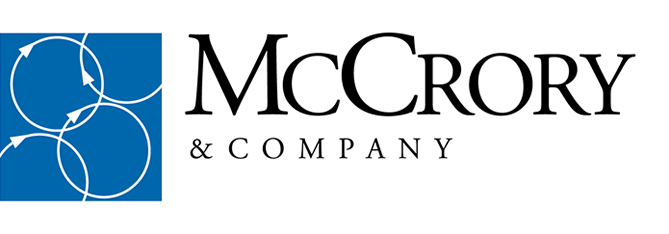The proverbial dog caught the car
September 17, 2023
Recent Posts
- 2024 Sprint Selling Virtual “Open” Workshops
- The proverbial dog caught the car
- Can Prospecting be a successful priority for Salespeople? It has to be!
- Have Salespeople Lost Something?
- Gain an advantage in your Virtual Sales Meetings
- Are your opportunities winnable before month-end?
- Do we chase every “opportunity”?
- How effective is your sales talent?
- Let’s Get Virtual, Virtual – Supporting upskilling of your sales team in the time of Coronavirus
- YouTube of webinar: Selling in Turbulent Times

We got verbal, now what?
The prospect said yes and now the negotiations begin. Congrats on the verbal, yet the bad news is that your prospect knows that you and your leadership want to get this opportunity closed before the end of the month and/or quarter. Below are some thoughts for helping you get it across the finish line, while retaining both your personal credibility as well as the value/profitability of your solution.
Have you been selected?
This question has to be answered. Has the prospect, particularly the decision maker, stated that they want to do business with you? Or instead, are they just asking you to give them your best price and terms, perhaps so that they can then leverage your package with that vendor that they really want to do business with? If you have not yet been selected, you may just be “column fodder”.
Plan before you begin to negotiate
How involved were you in facilitating the buyer’s buy cycle and what do you know that will help you and your team during your upcoming negotiation? My previous article mentions six important pieces of information that will help you both build your credibility and lead your prospect to buy you, your product/service as well as your company. Knowing each of these variables, you will see later, will help you become a better negotiator: Sale = Pain x Power x Vision x Value x Collaboration x CRTA.
Believe in your “value”
While it is important to know all of the above variables going into a negotiation, it is critical that you not only believe in the value of the “solution” that you have positioned, but that you have also established the value for them purchasing your solution. In other words, does the prospect, particularly the power person, understand and own how much they will make or save from using your capabilities? Specifically, will this monetary value motivate them, particularly during these turbulent times, to purchase your services, at your stated price & terms. If there is this value, you will not have to depend strictly on discounting to win the business.
Respect procurement
- We hope that you have already met with procurement early in the buying process to identify their internal objectives, processes as well as how they get compensated/rewarded. Address what is important to them. Consider using your own procurement team for advice.
- Leverage support from the client stakeholders that you established relationships with
- Elevate your solution from a commodity with procurement, in part by reviewing with them how you are helping a specific line of business solve their problems
Prepare your “stands”
Even if the decision maker has verbally agreed to do business with you, it’s almost a certainty that they will “squeeze” you. Particularly if procurement is involved, they will demand that you have to come down on your price and/or improve your terms or commercials. If you have participated with the prospect during their entire buy cycle, you should at the very least know, if not helped them develop each of the variables of the equation: Sale = Pain x Power x Vision x Value x Collaboration x CRTA, as these will become the basis of the stands that you can use during your upcoming negotiation. A stand is defined as how you will withstand their squeezes, both politely and with logic, i.e. “I’m not sure I understand the need to pay less. When we reviewed the potential value for this project, it appeared that there was significant return and that the project would pay for itself in less than 10 months. Has something changed?”
Don’t give without first getting
“You have to do better!” At some point during your negotiation, your prospect will say this, even if you have maintained the value of your services by withstanding multiple squeezes. If by chance you say, “Okay, I will reduce our price by x amount”, they will say in response, “thank you very much, I will take that and in addition, I want the following!” In other words, they will take everything that you put on the table. As a result, it will be important for you also to be prepared with your “gets” (those things that are low cost to the prospect but of high value to you and your company) and your “gives” (those things that are low cost to you but of high value to your prospect).
Negotiating Dialogue Framework™ – High Level
Step A: Hear Buyer Position
- Ask for clarification to understand their position
Step B: Determine Underlying Interests
- Ask questions to understand the interests behind their position
Step C: Offer a Stand
- To deflect the buyer’s position & to support your value – be prepared with multiple stands
Step D: Define Terms of Get / Give
- Inform the buyer of the terms of your gets & gives
Step E: Get Something from the Buyer
- Ask for the first “get” from your prepared list – if rejected, suggest the next
Step F: Give something to the Buyer that has assumed high value
- Offer first “give” from your prepared list – if rejected, suggest the next
Step G: Confirm Agreement
- Restate the gets & gives that have been agreed upon and then discuss next steps
Final thoughts
The best negotiators are those that have been the most effective at helping to facilitate a prospect’s buy cycle – before the negotiation even begins. Some other key concepts that will make you a better negotiator at month-end include: preparing your stands as well as your gets & gives; Anticipating the interests behind the prospects initial position; and understanding that there is a proven framework to leverage during the execution of your negotiation. Let us know if we can support your efforts to prepare for and/or execute an upcoming negotiation with a prospect or client.
QUESTIONS: Which step of either the preparation for or the execution of a negotiation is the biggest challenge for you? Do you always feel that you are even negotiating with the right person or that you understand their underlying interests?

